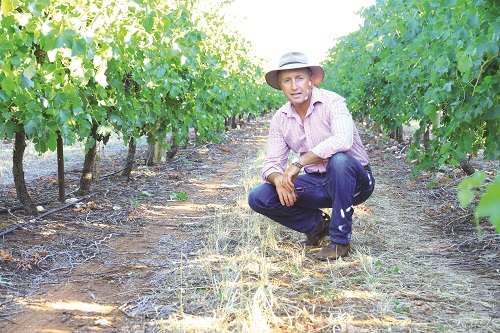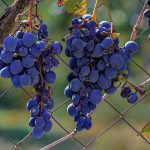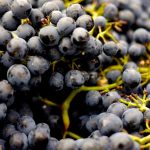In the February issue of Grapegrower & Winemaker magazine, the theme was ‘climate change’. Journalist Eleanor Danenberg talked to vignerons from warm and cool climate areas to find out how climate change is affecting their vines and how they’re adapting to the changing conditions
Ken Helm, Director/Winemaker Helm Wines, Canberra
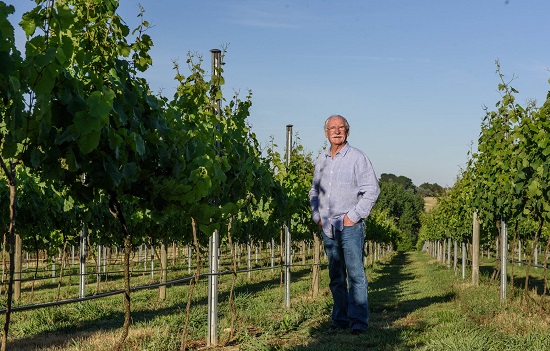
What have been the indicators of climate change in your vineyard?
This year we’ll be harvesting in late February or the first week of March.
Around 1985-1986, [we were] harvesting our Riesling in the last week of March. Since that time, we’ve seen Riesling progressively being harvested earlier, and now, a three-week difference, and we put that down to climate change, as the temperatures continue to increase.
With grapevines, what dictates the harvest period is not just the warmth during the growing season, but, the warmth in spring. If we have warm springs, the vines flower earlier, so therefore they will ripen earlier. The benchmark is [typically] a hundred days from flowering to harvest. So if we get early flowering caused by a warm spring, then we’ll get an early harvest. It’s not just a hot summer, but it is all being driven by climate change, and warmer temperatures.
Grapegrowrers generally keep very accurate records of when they harvest and the sugars, and the acids, etc, so I have records extending across 40-odd years and you can see the harvest progressively getting earlier, and the sugar/flavour levels accumulating faster.
In the last 10 years we’ve also seen a reduction in rainfall, and droughts are becoming more frequent.
What have you been doing to combat the challenges posed by climate change?
With Riesling, hot, dry conditions will put Riesling under stress and you lose leaves around the bunches in the last month before harvest, which results in sunburning of the grapes. This leads to a kerosene/petrol character in the wine, which I regard as a fault, as do many of my fellow Riesling producers. We allocate water to make sure the vines are in good health and that we keep the leaves on right through to harvest, so we get higher quality, sunburn-free fruit. When I look back at our harvest records, in the early days that wasn’t a factor that we were particularly concerned about, but progressively over the last 20 years, that’s been at the forefront of our minds – to keep the leaves on and prevent sunburn.
We now plant our vineyards east to west, whereas 45 years ago they were always orientated north to south for maximum sunlight. We’re also planting our vines closer together so we can get shading of the ground so we don’t get reflected heat onto the Riesling. All of those factors we’re taking into consideration as the temperatures increase and it gets drier.
We’re embarking upon mulching techniques, which reduces heat on the ground. We don’t use any cultivation, we have mulched grass between our rows to try and reduce the heat and make it a more natural, ecological environment. We’re looking at mulching under the vines in an attempt to cool things down, use less water and get back to a more natural environment.
Let’s talk about water usage. Are you allocating more water to your grapes?
We allocate more water to our Riesling. We have a bit of conflict in our vineyards. With Riesling, we can’t afford it to get any sunburn; we don’t want it under stress otherwise we see a degrading of the quality of the fruit. With the Cabernet, it’s the exact opposite; we like to have the canopy of the Cabernet open, and let the sunlight in. In the last five years we’ve been dry growing our Cabernet, so the water we used to use on the Cabernet, we now allocate to our Riesling.
Any other thoughts?
We’re being very resourceful in our approach. We’re doing everything we can. Trying to stay ahead of the game. We’re even looking at new vineyards on sites around Canberra at 800+ metres above sea level. Where we are is 600m above sea level. As you go up in altitude it gets cooler, so if the warm trend continues, we will seek new vineyard sites in these areas.
Ashley Ratcliff, Ricca Terra Farms, Riverland, South Australia
What have been the indicators of climate change in your vineyard?
It’s a really difficult question to answer because [we’ve had] our own vineyard for 16 years, and I’ve been in the industry 30-odd years now and, honestly, am I seeing any significant changes due to climate change? I’d say nothing that stands out because we’ve always had heat spikes and heatwaves coming through. We are seeing back-to-back droughts, so I guess you could say that’s a potential sign [of climate change]. I couldn’t say we’re seeing really clear indicators of climate change, but we have only been on the land for a short time compared with others. It’s like reading one page in a novel and then knowing how the story ends. Now, in saying that, I believe in climate change as there is some strong evidence we are seeing change over a long period, hence why we have employed climate-adaptive strategies in our vineyards. I would rather do what we are doing and end up having no climate change (I think everyone would want this) rather than doing nothing and find out we have a major crisis to deal with and we then need to catch-up. I feel catching up would not be possible!
You grow 15% alternative varieties. Are they more heat-resistant?
Yes and no. We plant them for two reasons: one reason is for the market; we believe that the style of wines these grapes will make will be more suited to the market and, hence, they will be in greater demand and have a greater price. We also planted some of these varieties during the last major drought (we learned a lot during the last drought….there are always positives to find during difficult times), and the aim there was to find varieties that we didn’t have to irrigate as much, so we looked at varieties that are very vigorous, varieties such as Nero d’Avola. [When I worked] at Yalumba I held the role of technical manager of viticulture, and we did trial work on different rootstocks to understand their ability to manage and grow with less water, like Ruggeri and Ramsay. Our aim was to see how much water we could apply below our control of 5Ml/ha and continue to grow a commercial crop. As expected, the less water we applied the less crop we produced, but we were able to halve the water applied and achieve a viable crop. More importantly, the quality of wine produced was significantly better than what was made compared to the control. The big learning for me was, if less water was applied the wine quality increased, less water means less cost, and less water is better for the environment!
Are you facing challenges because of the weather – the heat and the drought conditions?
Water prices have gone up. Realistically, that could be linked to climate change. But at the same time, what’s pushed the price of water up has been more crops being put in up river, like almonds, more table grapes, and citrus – which are big users of water. So, the impact is more demand for water in the rivers that’s put the price of water up.
The upside of the warmer weather is diseases we’re trying to manage through the inland areas can be controlled, can definitely be mitigated by the drier climate, so that’s a bonus of temperatures getting higher. Unfortunately the bonuses of higher temperatures are greatly outweighed by the negatives.
Our simple strategy of managing higher water prices has been to put in varieties that need less water – not just the variety but the rootstock as well. That’s one of the reasons we did put in these alternative varieties and rootstocks. We’re still learning.
Do you have any conventional/ traditional varieties that are suffering, or are all of your varieties tracking about the same?
A lot of Muscat varieties really suffer in extreme heat. Gordo and Muscat APG are two varieties that really suffer; they burn very easily.
What else are you doing to combat the challenge of weather/climate change?
We combat through learning. We’re planting a lot of Portuguese varieties and just seeing how they perform. We’re using mulches. For us the key thing is, for every drop of water we put on, how do we get the most out of it?
Also, [we’re] trying to make wines that we can pick earlier. [With] lower alcohol wines, you can pick your fruit earlier. Picking grapes earlier means we don’t have to put as much water on, and we can pick before more hot weather comes through. The bottom line is, I am a believer that we are seeing changes in the climate based on long-term data. I’d rather be making changes [now] that are good for our farm and our business, than not [making changes] and finding out in another 10 years or 20 years we start seeing major impacts and we haven’t done anything. Then we’re chasing our tail. With grapegrowing, you can’t make a change overnight.
Justin Jarrett, See Saw Wines, Orange, New South Wales
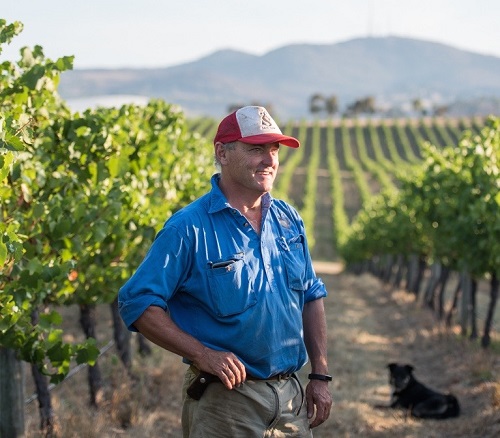
What have been the indicators of climate change in your vineyard?
The main obvious change has been the date of harvest; [it] has come forward by about four weeks.
The main thing we’ve seen is not actually the hot days but the night temperatures are a lot higher than they used to be a few years ago.
What are you doing to combat this challenge?
Our leaf plucking, our shoot picking, and trimming are all operations that we try to time knowing that there could be a heatwave coming. The last few years we’ve been using more sunscreen products. We try to irrigate in such a way that if/when the heatwaves come, we’ve got enough water there available for the conditions.
We’re increasing the organic matter in our soils, we’re composting, mulching, and that’s to do with trying to hold as much water in there to allow the vine to have enough transpiration potential in [times of] increased heat.
Finally, we are changing varieties on different sites to see what will suit a warmer climate in the long term. What we’re doing over time is that Sauvignon Blanc is getting planted up higher. So we haven’t yet [planted] heatresistant varieties, just going higher with current varieties.
By 2020, our plan is to be planting newer, heat-resistant varieties. I don’t think it [climate change] is going away. Everywhere in the world is warming up.
Ian Macrae, Senior Viticulture Officer, CCW Co-operative Limited, Riverland, South Australia
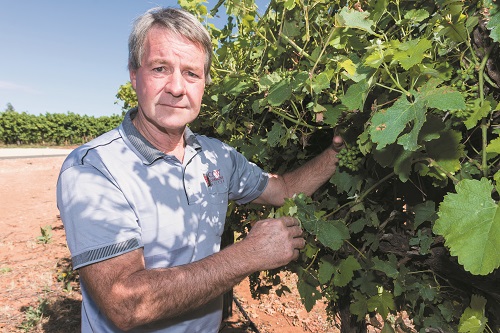
Photo credit: The Murray Pioneer
What have been the indicators of climate change in your company’s vineyards?
It shows up in different ways. If you look at the data, it’s absolutely clear. I’ve tracked my historical data for the last 40 years: the heat degree days are steadily increasing year on year, it’s so definite, you can’t say it’s not occurring. Vintage is starting earlier and earlier, almost starting three weeks earlier than 30-40 years ago. The seasons are becoming more and more compressed; 14-week vintages are no longer the norm, it’s more like eight, nine or 10-week vintages. They cause significant problems, like leaf burn [and] delayed ripening.
CCW covers 550 growers in the Riverland.
What are they doing to combat these issues?
[For] heatwave events, a lot more people are retaining ground cover to reduce reflective heat; it’s a simple change but it can reduce the temperature in the vineyard markedly. [In terms of] water use, the best way to cool a vineyard is to keep the vines transpiring, getting evaporative cooling. A lot of people are [irrigating] overnight and during the heat of the day, just to avoid the most serious effects of the heatwaves, trying to cool them down. Quite a few people are using under vine sprinkler systems. A small percentage of people have overhead irrigation, so they use those to assist with evaporate cooling.
Clay-based sunscreen products – a lot of them are used around the place, particularly on the western side rows.
We [CCW] are working on information about soil health, a program that will run for four years. We’ve noticed that longterm drip irrigation has a detrimental effect on soil structure and soil health over many years. We want to remediate those problems while still using drippers.
One of the outcomes, we hope, will be greater water use efficiency and fertiliser use efficiency as the soil health improves. The coping mechanisms of the vine will be improved as well. They’ll be able to get by with less water than they would if the soil health wasn’t so good. That’s a long-term change.
[Another option is exploring] different varieties that are better adapted to warm conditions like Sicilian varieties. The problem with that is a lot of them are not household names. It takes a long time to develop a substantial market. People are putting a lot of effort into making a market for these varieties.
Are there any varieties of grapes that are suffering more than others?
There are some that are a bit more precious. Shiraz is one of our major varieties [and] it can suffer under the high-temperature conditions. They do not have the capacity to protect themselves to the same extent as Cabernet. Shiraz needs irrigating to stop it wilting. It can be severely impacted.
This article was originally published in the February issue of Grapegrower & Winemaker magazine. Click here to subscribe.

